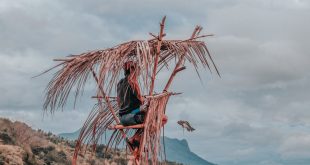This article was contributed by Marrah Erika Lesaba of Inquirer Southern Luzon and was first published on newsinfo.inquirer.net
Batangas City — It used to take a 45-minute boat ride for people living in Barangay Calawit, Balete town in Batangas to be able to charge their cellular phones in mainland Taal, as well as buy batteries for flashlights and kerosene for lamps to light up their homes.
With their recent acquisition of solar lamps, all the villagers needed to do was to let the sun do all the work to make life easy for them.
The solar lamps were distributed to 80 boatmen, tour guides and horsemen of Taal Lake and Taal Volcano Protected Landscape on Aug. 7 as part of a project of Globe Telecom Inc., Pusod Inc. and Stiftung Solarenergie-Solar Energy Foundation Philippines.
Yolly Crisanto, Corporate Communications head of Globe Telecom Inc., said Calawit was one of the villages identified by Globe Telecom as not part of the main electrical transmission grid so they rely on fossil fuels such as coal and petroleum to provide light in the evening.
It is one of the 13 villages of Balete town and the only barangay from Balete on Taal Volcano Island. It has a population of 1,500, mostly fishermen, tour guides, boatmen and horse guides.
Exposure time
Arnel Landicho, a boatman and village chief of Calawit, said he would expose his solar lamp to sunlight for half a day for it to be fully charged.
Should the solar lamps encounter problems, the recipients have to bring their units to Pusod Taal Lake Conservation Center (TLCC), which will, in turn, hand these over to Stiftung Solarenergie in Makati City for repair or replacement.
Right now, some of the lamps have not been working well so they have to bring the units back to TLCC, Landicho said.
He said tourists going to Taal Volcano visit only during the day so he would use his solar lamp at his home at night. “There are no more guests at night, but if there will be we use the solar lamps to bring them there but guests have to secure a permit from the authorities first.”
Sustainable tourism
Elaine Santillan, Pusod executive director, said the 80 recipients were also beneficiaries of the center’s sustainable tourism project.
Instead of spending on fuel and gas for their light, these recipients would just charge the solar lamps under the sunlight so they could be used at home, for fishing and for guided tours, she said. Rental fee for a boat that can carry six passengers is P2,000. A tour guide and a horse guide receive P300 fee each.
Santillan said the solar lamps needed to be charged regularly and the user need not wait for the battery to be completely drained before charging. Globe and Pusod taught the recipients how to maintain their units.
Settings
“When we go to sleep, we place it on ‘bed’ setting. If we go for a walk, it’s on ‘low’ setting and for bright light for the house, it’s on ‘high’ setting,” Landicho said.
Fernando Esguerra, officer in charge for Globe corporate social responsibility unit, said the solar lamps’ illumination could last up to 100 hours when placed under bed setting, 16 hours under low setting, eight hours under medium setting and four hours under high setting.
They could also be used to charge mobile phones.
“When the solar lamps are not charged properly, there will be fluctuations when they use the units. The battery is one of the best—lithium ferrous—so if they use the solar lamps properly, the battery will last from five to six years,” Santillan said.
Two models—D. Light S300 Dual Function Solar Lamp with a one-year warranty period and Solectric 15 Solar Power System with a two-year warranty—were distributed.
Pusod personnel will return to the island on Sept. 6 to get a feedback on the solar lamps, Santillan said.
Crisanto said that through the solar lamp project, Globe Telecom reinforced its commitment to environmental sustainability by promoting the benefits of using renewable energy among its partner-communities in far-flung places deprived of electricity.
 WOWBatangas.com Your Source of Great News and Stories from the Province of Batangas, Philippines
WOWBatangas.com Your Source of Great News and Stories from the Province of Batangas, Philippines



